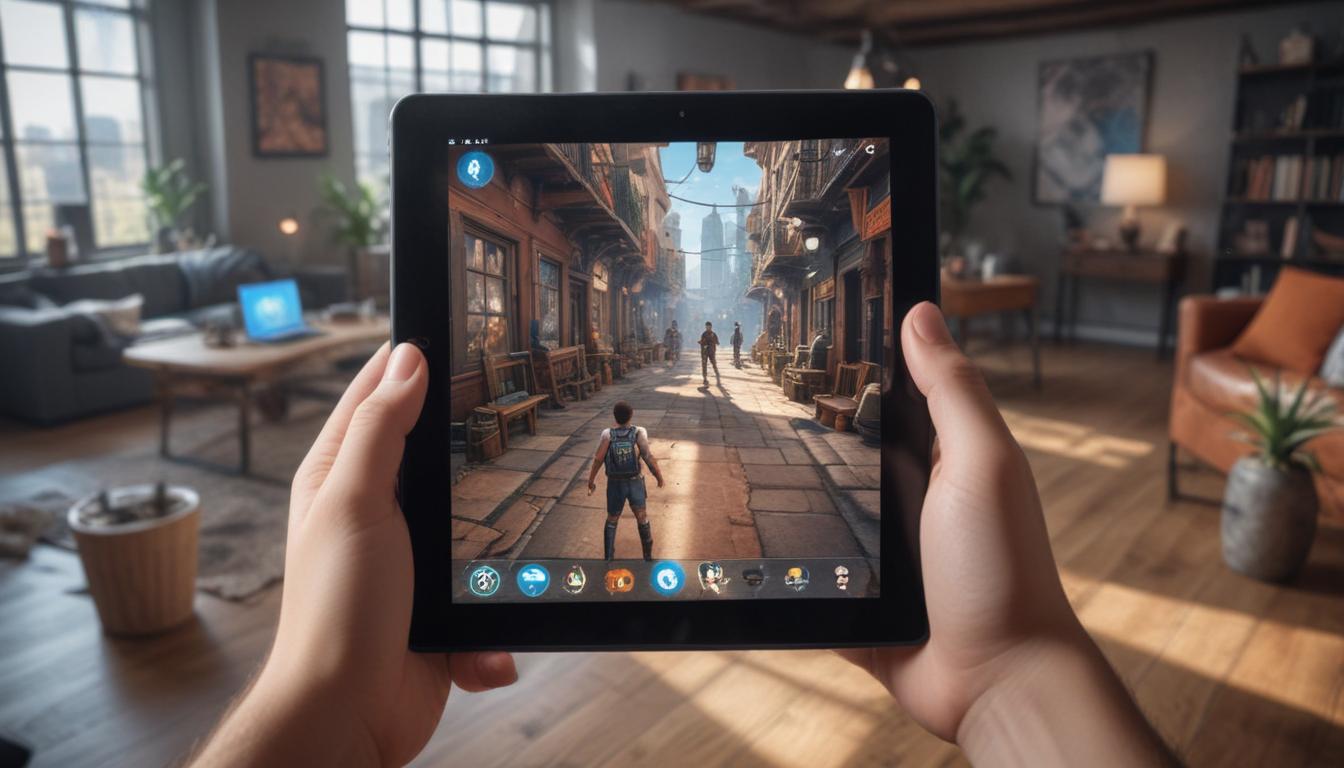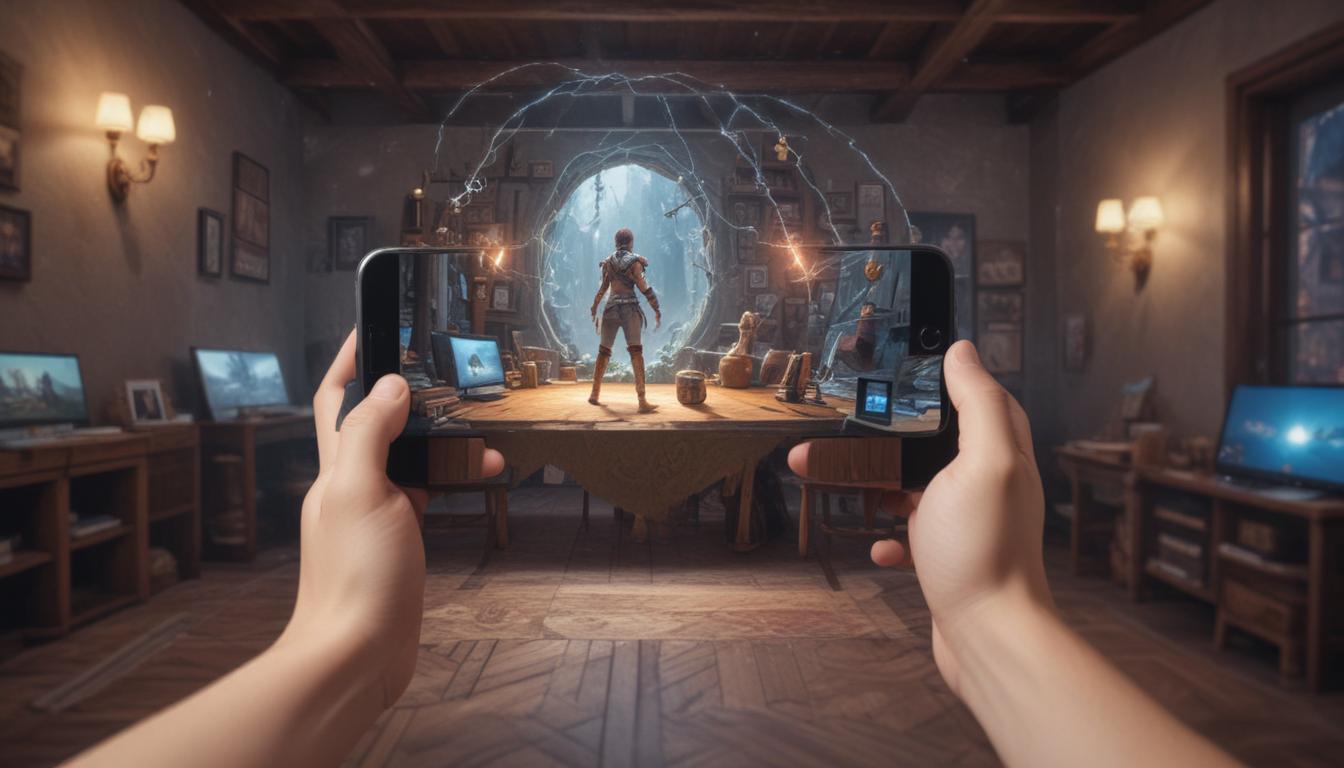Now Reading: Build an AR Game From Scratch
- 01
Build an AR Game From Scratch
Build an AR Game From Scratch

Augmented Reality Game Development Your Ultimate Guide to Creating Immersive Experiences
Have you ever imagined your game characters leaping from the screen onto your coffee table, or a mythical portal opening up in your own backyard? This is the magic of augmented reality, a technology that is rapidly transforming the gaming landscape. Yet, for many aspiring developers and creative minds, the leap from a brilliant idea to a functional AR game seems like a monumental task, shrouded in complex code and intimidating software. You might feel stuck, wondering where to even begin with a technology that feels both futuristic and inaccessible.
This guide is your solution. We are here to demystify the process of AR game development, breaking it down into clear, manageable steps. Forget the confusion and overwhelming technical jargon. We will walk you through the core concepts, the essential tools, and the key stages of creation, empowering you to turn your vision of a blended-reality world into a tangible, playable experience. Whether you are a seasoned game developer or a curious newcomer, you will find the foundational knowledge you need to start building.
Understanding The Core of AR Game Development
Before you write a single line of code, it is crucial to grasp what makes AR game development fundamentally different from traditional game creation. Unlike Virtual Reality (VR), which replaces your surroundings with a completely digital world, Augmented Reality overlays digital information onto your existing environment. This means the real world is not just a backdrop; it is an active part of the gameplay. Your living room floor becomes the battlefield, and a park bench can become a quest objective. This interaction between the digital and the physical is the heart of every great AR game.
The technology that makes this possible relies on several key components working in unison. Most AR systems use a process called SLAM (Simultaneous Localization and Mapping), which allows a device like your smartphone to understand its position within a physical space and map the geometry of the environment in real time. This includes plane detection (identifying flat surfaces like tables and floors), light estimation (matching the lighting of virtual objects to the real-world lighting), and motion tracking (understanding how the device is moving). A successful AR game developer does not just build a game; they design an experience that intelligently responds to the player’s unique, ever-changing environment.
Choosing Your AR Development Toolkit
With a solid conceptual understanding, your next step is to select the right tools for the job. The AR development ecosystem is dominated by a few major platforms, and your choice will largely depend on your target audience and development preferences. The foundational technologies are Apple’s ARKit for iOS devices and Google’s ARCore for Android devices. Developing natively for these platforms gives you the fastest access to the latest features and optimal performance on their respective hardware. However, it also means you have to maintain two separate codebases if you want to release your game on both app stores.
For this reason, most game developers, especially independents and small studios, turn to powerful cross-platform game engines. Unity is the undisputed leader in this space, offering a robust framework called AR Foundation. This package abstracts away the platform-specific code, allowing you to write your game once and deploy it to both ARKit and ARCore compatible devices. Unity’s massive community, extensive documentation, and asset store make it an incredibly accessible entry point. Alternatively, Unreal Engine offers its own powerful AR tools, often favored for projects that demand the highest level of visual fidelity and realism. For most beginners, starting with Unity and AR Foundation is the most efficient path to creating your first AR game.

Key Steps to Building Your First AR Game
The journey of creating an AR game follows a structured path from idea to execution. It all begins with concept and design. This is where you must think differently. How will your game use the player’s space? Is it a tabletop tower defense game that sits on a desk? Is it a pet simulator where a virtual creature roams your house? Brainstorm mechanics that are uniquely suited for AR. A great AR game feels broken when played on a static screen because its very essence is tied to movement and physical space. Storyboard the user experience, from the initial instruction to scan their environment to the core gameplay loop.
Once your concept is solid, you move into asset creation and prototyping. This involves creating or acquiring the 3D models, animations, and sounds that will populate your game. It is vital to optimize these assets for mobile performance to ensure a smooth frame rate. Next, you will bring everything into your chosen game engine, like Unity. Here, you will write the scripts that control the game logic, set up the AR session to enable tracking and plane detection, and build a prototype. Prototyping is especially critical in AR. Build a simple version of your core mechanic as quickly as possible and test it in various real-world locations. Test it in a small, dimly lit room and a large, bright open space. This iterative process of building and testing is where you will discover what truly works and what does not.
Overcoming Challenges and Looking Ahead
AR game development is not without its unique hurdles. One of the biggest is environmental variability. Your game must be robust enough to function in countless different environments with varying lighting conditions, textures, and amounts of open space. A game that works perfectly in your well-lit office may fail in a dimly lit basement. Effective user experience (UX) design is paramount here. You must gracefully guide the user on how to find a suitable surface for gameplay without causing frustration. Another challenge is the diversity of hardware, as performance can vary significantly between high-end and low-end AR-capable phones.
Despite these challenges, the future of AR gaming is incredibly bright and full of innovation. The integration of Artificial Intelligence (AI) is making virtual characters smarter and more aware of their physical surroundings. The development of persistent, shared AR experiences using Cloud Anchors will enable massive multiplayer games where players in the same physical location can interact with the same virtual world. As 5G networks become more widespread, they will unlock the potential for high-bandwidth, low-latency cloud streaming of AR content, making experiences more complex and graphically impressive than ever before. By mastering the fundamentals today, you are positioning yourself at the forefront of the next great wave in interactive entertainment.


































